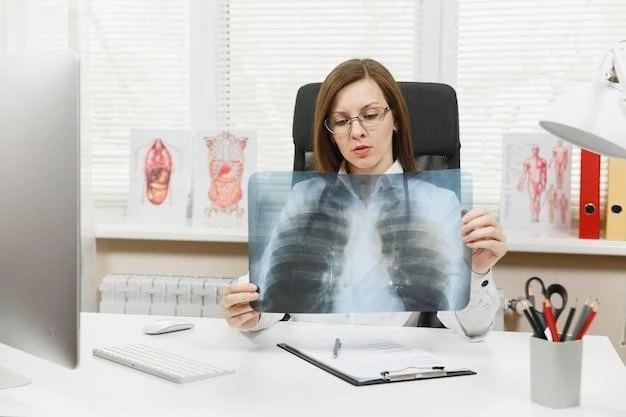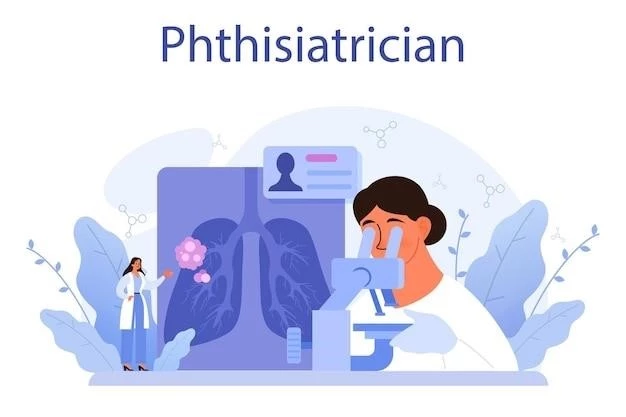Understanding Ciliary Dyskinesia-Bronchiectasis
Causes of Ciliary Dyskinesia-Bronchiectasis
Symptoms and Diagnosis of Ciliary Dyskinesia-Bronchiectasis
Treatment Options for Ciliary Dyskinesia-Bronchiectasis
Lifestyle Management for Ciliary Dyskinesia-Bronchiectasis
Research and Advances in Ciliary Dyskinesia-Bronchiectasis
Prognosis and Complications of Ciliary Dyskinesia-Bronchiectasis
Support and Resources for Ciliary Dyskinesia-Bronchiectasis
Prevention Strategies for Ciliary Dyskinesia-Bronchiectasis
Causes of Ciliary Dyskinesia-Bronchiectasis

Ciliary dyskinesia-bronchiectasis is primarily caused by genetic mutations affecting cilia function․ These mutations lead to impaired ciliary movement, resulting in mucus buildup in the airways․ Other causes can include recurrent respiratory infections and exposure to environmental pollutants․ Identifying the underlying genetic mutations is crucial for accurate diagnosis and management of the condition․
Symptoms and Diagnosis of Ciliary Dyskinesia-Bronchiectasis
Recognizing the symptoms of ciliary dyskinesia-bronchiectasis is crucial for early intervention․ Common signs include chronic cough, recurrent respiratory infections, wheezing, and shortness of breath․ Diagnosis involves a thorough clinical evaluation, imaging tests like CT scans, and specialized tests like nasal nitric oxide measurement and ciliary function testing․ Seeking prompt medical attention upon experiencing these symptoms is essential for proper management․
Treatment Options for Ciliary Dyskinesia-Bronchiectasis
Managing ciliary dyskinesia-bronchiectasis involves a multidisciplinary approach․ Treatment options focus on clearing mucus, preventing infections, and maintaining lung function․ This may include airway clearance techniques, bronchodilators, antibiotics, anti-inflammatory medications, and in severe cases, lung transplantation․ Collaborating closely with pulmonologists and respiratory therapists is key to developing a personalized treatment plan tailored to individual needs․
Lifestyle Management for Ciliary Dyskinesia-Bronchiectasis
Adopting a healthy lifestyle is essential to complement medical treatment for ciliary dyskinesia-bronchiectasis․ This includes staying physically active to improve lung function, maintaining a balanced diet rich in nutrients, staying well-hydrated, avoiding exposure to smoke and pollutants, and practicing good hygiene to reduce the risk of infections․ Engaging in activities that promote overall wellness can significantly enhance quality of life for individuals with this condition․
Research and Advances in Ciliary Dyskinesia-Bronchiectasis
Ongoing research and advancements in the field of ciliary dyskinesia-bronchiectasis aim to improve treatments and outcomes for individuals․ Clinical trials are exploring new therapies, gene-editing techniques, and personalized medicine approaches; Staying informed about the latest developments through reputable sources and discussing emerging treatment options with healthcare providers can empower patients to make informed decisions about their care․
Prognosis and Complications of Ciliary Dyskinesia-Bronchiectasis
Understanding the prognosis and potential complications of ciliary dyskinesia-bronchiectasis is vital for long-term management․ Complications may include recurrent lung infections, respiratory failure, and reduced lung function over time․ Regular monitoring by healthcare professionals can help detect complications early and adjust treatment plans accordingly․ It’s important for individuals with this condition to stay proactive in managing their health and adhere to recommended medical interventions to optimize their prognosis․
Support and Resources for Ciliary Dyskinesia-Bronchiectasis
Living with ciliary dyskinesia-bronchiectasis can be challenging, but there are support networks and resources available to assist individuals and their families․ Seeking out patient advocacy groups, online forums, and educational materials can provide valuable information and emotional support․ Connecting with healthcare professionals specializing in respiratory conditions and accessing rehabilitation programs can also enhance the overall care experience․ Remember, you are not alone, and there are resources to help navigate the journey with this condition․
Prevention Strategies for Ciliary Dyskinesia-Bronchiectasis
While ciliary dyskinesia-bronchiectasis is primarily genetic, there are preventive measures that can help minimize complications and improve quality of life․ Avoiding exposure to tobacco smoke, maintaining good respiratory hygiene, staying up-to-date on vaccinations to prevent infections, and following a healthy lifestyle can all contribute to reducing the risk of exacerbating the condition․ Regular check-ups with healthcare providers to monitor lung health and addressing any concerns promptly are key components of preventive care․
